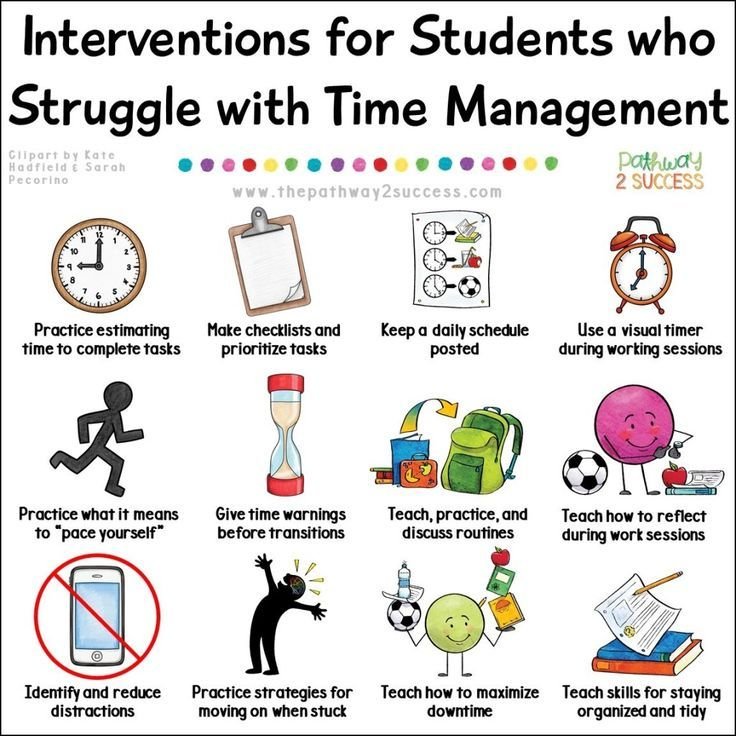Struggling to fit everything into your day? You’re not alone. Learning effective time management is a skill, not a talent, and engaging in practical activities on time management can be a game-changer. The great news is that these activities don’t have to be boring. In fact, many of them are surprisingly fun and interactive! Let’s dive into some engaging ways to reclaim your time and boost your productivity.
At a glance:
- Time management is about planning and controlling how you spend your time.
- Effective time management reduces stress and improves decision-making.
- Fun activities and exercises can make learning time management skills enjoyable.
- Prioritizing tasks and identifying time-wasters are crucial for productivity.
- Syncing calendars and creating distraction-free zones can improve focus.
What is Time Management Anyway?
Time management is essentially the art of planning and consciously controlling the amount of time you dedicate to specific tasks. It’s about being more efficient and, ultimately, more productive. Think of it as being the conductor of your own daily orchestra, ensuring each instrument (task) plays its part at the right moment and with the right intensity. Good time management encompasses prioritizing tasks, allocating the right amount of time to each, and maintaining the discipline to stick to your schedule.
Why bother? Well, the benefits are substantial. Effective time management can drastically reduce stress, improve your decision-making abilities, and lead to a better work-life balance. It allows you to focus on what truly matters, both professionally and personally.
Engaging Activities to Sharpen Your Time Management Skills
Ready to roll up your sleeves and get practical? Here’s a curated list of activities, games, and exercises designed to make time management less of a chore and more of an engaging experience.
Individual Reflection and Awareness Activities
These are activities you can do on your own to gain a better understanding of your current time management habits and identify areas for improvement.
- What Did You Do Yesterday?: Think back on your day. Jot down five things you accomplished. Then, identify one thing you did that was a complete waste of time. This exercise highlights how you’re actually spending your time versus how you think you’re spending it.
- Time Audit: Track your activities in detail for a week. This can be eye-opening! Use a template to record how you spend your time in blocks (e.g., every 30 minutes). At the end of the week, analyze where your time is going. Are you surprised? This provides a clear understanding of where your time truly goes.
- Identify Time Wasters: What are your biggest productivity killers? Is it social media, email notifications, or chatty colleagues? Make a list of your personal time-wasters and brainstorm strategies to minimize their impact. For some, it’s constant notifications; for others, it might be the allure of a “quick” online shopping break.
- The Procrastination Identifier: Honestly assess why you procrastinate. Are you afraid of failure, overwhelmed by the task, or simply not interested? Understanding the root cause of your procrastination is the first step to overcoming it. Is it fear of failure? Break the task into smaller, less intimidating steps.
Group Activities and Exercises
These activities are best done in a team or group setting, perfect for workshops, training sessions, or just a fun team-building exercise.
- How Long is a Minute?: Have participants close their eyes and estimate when one minute has passed. This simple exercise demonstrates how subjective our perception of time can be, and can underscore the importance of time awareness.
- The Jigsaw Puzzle Challenge: Divide participants into groups and give each group a jigsaw puzzle without the picture reference. After three minutes, stop them and discuss their progress. Then, provide the reference picture and let them continue. This highlights the importance of having a clear goal and plan.
- Colored Item Scavenger Hunt: Divide participants into teams and give them a set of colored items with different point values (e.g., red = 1 point, blue = 3 points, green = 5 points). Teams have one minute to collect as many items as possible using their non-dominant hand. Repeat with different point values for each color. This demonstrates the importance of organization and prioritizing tasks based on value Boost Management with Time Exercises.
- Card Sorting Relay: Divide the class into teams and give each team a shuffled deck of cards. Explain that each team must put the cards in a specific order (e.g., Ace to King, by suit). Give teams five minutes to strategize, then start the relay. This activity emphasizes planning and delegation.
- Prioritization Power: Divide participants into groups and provide each group with a flip chart and markers. Ask them to create a list of tasks and prioritize them based on importance and urgency. Discuss why some tasks are more critical than others. This is a great warm-up for learning the Eisenhower Matrix (see below).
- Effective Meeting Practice: In small groups, have participants brainstorm common pitfalls that make meetings unproductive. Then, discuss strategies for conducting more efficient and focused meetings. For example, a pre-circulated agenda and a designated timekeeper can work wonders.
- Sync Your Calendars: Have team members review their digital calendars and share their schedules for the upcoming week. Identify potential overlaps and gaps, and synchronize calendars to avoid scheduling conflicts. This simple step can save a lot of headaches.
- $86,400 Exercise: Tell participants to imagine they have $86,400 to spend each day, but any unspent amount is lost. Ask them to list the activities they would “spend” their money on. Then, reveal that each dollar represents one second, encouraging reflection on how they spend their time.
- Delegation Game: Divide participants into groups and give each group a set of task cards representing different responsibilities. Set a timer for each round and have the teams delegate tasks among themselves within the allotted time.
Applying Time Management Frameworks:
Time management isn’t just about doing more; it’s about doing the right things. These frameworks offer structured approaches to prioritizing and organizing your tasks.
- The Eisenhower Matrix (Urgent/Important): This powerful tool helps you categorize tasks based on urgency and importance. Draw a 2×2 matrix with “Urgent/Not Urgent” on one axis and “Important/Not Important” on the other. Place your tasks in the appropriate quadrant:
- Urgent and Important: Do these tasks immediately. (e.g., crisis, deadline-driven projects)
- Important but Not Urgent: Schedule these tasks for later. (e.g., planning, relationship building)
- Urgent but Not Important: Delegate these tasks if possible. (e.g., some meetings, interruptions)
- Neither Urgent nor Important: Eliminate these tasks. (e.g., time-wasting activities, busywork)
- SMART Goals: Help your employees articulate and plan their group goals while managing their time effectively. Ask each group to write down one goal they want to achieve in the next 7 days. Then, have them discuss and refine their goals to fit the SMART criteria: Specific, Measurable, Achievable, Relevant, and Time-bound.
- Time Blocking: Allocate specific blocks of time for different tasks or activities. This can help you structure your day, maintain focus, and ensure that important tasks don’t get overlooked. Create a schedule template and allocate time blocks for meetings, emails, project work, and breaks. This is especially helpful for those who struggle with procrastination.
- “Don’t Disturb” Zones: Designate specific periods as “no interruption” zones for focused work. Put a “Do Not Disturb” sign on your workstation and turn off notifications. Even short bursts of uninterrupted work can significantly boost productivity Effective Time Management Activities.
Addressing Common Time Management Challenges
Let’s tackle some frequent roadblocks that can derail even the best time management efforts.
- The Perfectionism Trap: Striving for excellence is admirable, but perfectionism can lead to paralysis. Recognize that “good enough” is often sufficient, and avoid getting bogged down in minor details.
- The “Yes” Habit: Saying “yes” to every request can overload your schedule and leave you feeling overwhelmed. Learn to politely decline tasks that don’t align with your priorities or that you simply don’t have time for.
- Multitasking Myth: While it may seem efficient, multitasking actually reduces focus and productivity. Concentrate on one task at a time for better results. Studies show that multitasking can decrease productivity by as much as 40%.
Quick Tips for Immediate Time Management Improvement
Here are a few actionable tips you can implement right away:
- Start with a List: Create a daily to-do list, prioritizing the most important tasks.
- Break Down Large Tasks: Divide overwhelming projects into smaller, more manageable steps.
- Take Regular Breaks: Short breaks throughout the day can help you stay refreshed and focused.
- Minimize Distractions: Turn off notifications and create a dedicated workspace.
- Learn to Delegate: Don’t be afraid to delegate tasks to others when appropriate.
- Trim Meeting Durations: Challenge teams to distill agendas to essential points, set strict time limits, and appoint a timekeeper.
Frequently Asked Questions
- Is time management just about doing more in less time? No, it’s about doing the right things at the right time. It’s about prioritizing tasks and focusing on what truly matters.
- Can time management really reduce stress? Absolutely! By organizing your time and prioritizing tasks, you can reduce feelings of overwhelm and anxiety.
- What’s the best time management technique? There’s no one-size-fits-all answer. Experiment with different techniques and find what works best for you. The Eisenhower Matrix and time blocking are popular choices.
- How do I handle unexpected interruptions? Set boundaries and communicate your need for focused time. When interruptions occur, address them quickly and efficiently, or schedule a time to deal with them later.
From Theory to Action: Making Time Management a Habit
Developing effective time management skills takes practice and commitment. Start by incorporating a few of the activities and techniques discussed above into your daily routine. Don’t try to overhaul your entire system overnight. Instead, focus on making small, incremental changes that will gradually improve your productivity and reduce stress. Remember, time management is a journey, not a destination. Embrace the process, learn from your mistakes, and celebrate your successes. Make sure you are always working to Improve Your Time Management!
- Doctor Work Life Balance: Proven Strategies for Physician Well-being - November 20, 2025
- Find Your Work-Life Harmony: Quotes for a Fulfilling Life - November 18, 2025
- CRNA Work-Life Balance: Strategies for a Healthier Lifestyle - November 16, 2025
















